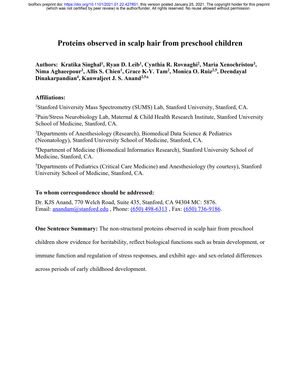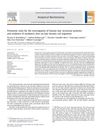Proteins Observed in Scalp Hair from Preschool Children
January 2021
in “
bioRxiv (Cold Spring Harbor Laboratory)
”

TLDR Mothers have more hair proteins than their children, with age-related differences in protein patterns, and some proteins in hair could indicate early childhood development.
In a study from January 25, 2021, researchers analyzed scalp hair proteins from healthy preschool children and their mothers, identifying 1368 proteins commonly found in children, 1438 in mothers, and 1288 proteins that varied among individuals. The study found that mothers had a higher number of peptide spectral matches and hair proteins than their children, with significant age-related differences in protein expression patterns between mothers and children, as well as between younger children (2 years and below) and older children (3-5 years). The analysis also revealed that hair protein patterns were more similar between mothers and their biological children than between mothers and unrelated children. The top 5% of proteins that varied among the population were linked to biological pathways involved in brain development, immune signaling, and stress response regulation. These findings suggest that non-structural proteins in scalp hair could serve as potential biomarkers for studying developmental changes related to early childhood experiences.


